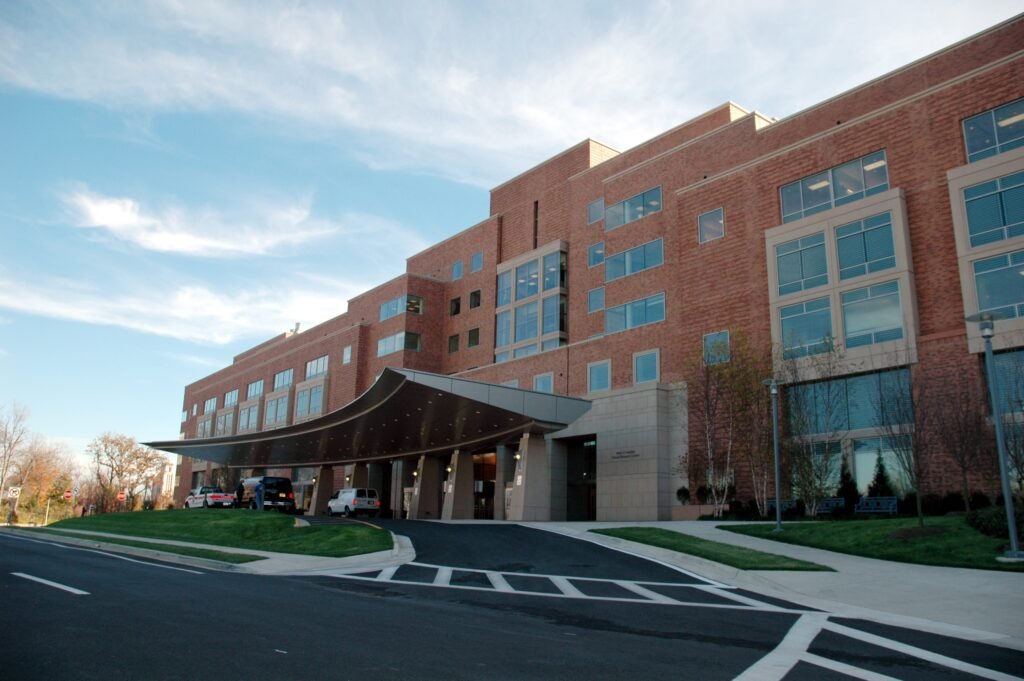In “A Review of Artificial Intelligence-Based Gait Evaluation and Rehabilitation in Parkinson’s Disease,” researchers explore the potential of artificial intelligence (AI) in assessing and treating gait difficulties in individuals with Parkinson’s disease. The article provides an overview of the current research and developments in this field, highlighting the benefits and challenges of using AI technology for gait evaluation and rehabilitation. By examining the use of various AI algorithms and sensor-based systems, the authors aim to shed light on how AI can enhance the accuracy and effectiveness of gait assessment and rehabilitation programs for patients with Parkinson’s disease.

Introduction to Parkinson’s Disease
Parkinson’s disease is a neurodegenerative disorder that affects movement control and coordination. It is characterized by the progressive loss of dopamine-producing cells in the brain. This depletion of dopamine leads to motor symptoms such as tremors, rigidity, and bradykinesia (slowness of movement). Although Parkinson’s disease primarily affects movement, it can also result in non-motor symptoms such as cognitive impairment, depression, and sleep disturbances. The exact cause of Parkinson’s disease is unknown, but both genetic and environmental factors are believed to contribute to its development. While there is currently no cure for Parkinson’s disease, various treatments and interventions can help manage the symptoms and improve the quality of life for individuals living with the condition.
Overview of Parkinson’s Disease
Parkinson’s disease is the second most common neurodegenerative disorder after Alzheimer’s disease. It affects approximately 1% of individuals over the age of 60, with the prevalence increasing with age. Men are slightly more likely to develop Parkinson’s disease than women. The average age of onset is around 60 years old, but early-onset cases can occur in individuals under the age of 50.
Symptoms of Parkinson’s Disease
The primary motor symptoms of Parkinson’s disease include:
- Tremors: Involuntary shaking or trembling of the hands, arms, legs, jaw, or face.
- Rigidity: Stiffness and resistance to movement in the muscles and joints.
- Bradykinesia: Slowness of movement, including difficulty initiating and executing voluntary movements.
- Postural instability: Impaired balance and coordination, leading to a tendency to fall.
In addition to these motor symptoms, Parkinson’s disease can also cause non-motor symptoms such as:
- Cognitive impairment: Difficulties with memory, attention, and executive functions.
- Depression and anxiety: Mood disorders that can significantly impact quality of life.
- Sleep disturbances: Including insomnia and rapid eye movement sleep behavior disorder.
- Autonomic dysfunction: Problems with blood pressure regulation, bowel and bladder control, and sweating.
Impact of Parkinson’s Disease on Gait
Gait abnormalities are commonly observed in individuals with Parkinson’s disease. These abnormalities can include a shuffling gait, reduced stride length, decreased arm swing, and freezing of gait. Gait impairments can lead to a higher risk of falls, decreased mobility, and reduced quality of life. Therefore, accurate and reliable evaluation of gait is crucial for assessing disease progression, monitoring treatment effectiveness, and developing targeted rehabilitation interventions for individuals with Parkinson’s disease.
Current Methods of Gait Evaluation in Parkinson’s Disease
Physical Examination by Clinicians
Physical examination by clinicians is a subjective method of gait evaluation commonly used in clinical practice. It involves the observation of gait abnormalities, such as shuffling or uneven steps, and the assessment of balance and coordination. While physical examination can provide valuable qualitative information about gait impairments, it is subjective and can be influenced by the clinician’s expertise and experience. Additionally, physical examination alone may not capture subtle changes in gait that occur over time.
Gait Analysis Systems
Gait analysis systems utilize various technologies, such as motion capture cameras and force plates, to objectively measure and assess gait parameters. These systems can provide quantitative data on gait characteristics, including stride length, cadence, and velocity. Gait analysis systems offer more precise and accurate measurements compared to physical examination alone. However, they are generally expensive, require specialized equipment and expertise, and are limited to laboratory settings, making them less accessible for routine clinical use.
Limitations of Current Methods
Both physical examination and gait analysis systems have limitations in the evaluation of gait in Parkinson’s disease. Physical examination is subjective and may not capture subtle changes in gait, while gait analysis systems are expensive and not easily accessible for routine clinical use. Additionally, both methods rely on observation during a limited time period and may not accurately reflect how gait varies in different daily life situations. There is a need for more objective and comprehensive methods to evaluate and monitor gait in individuals with Parkinson’s disease.
Artificial Intelligence-Based Gait Evaluation in Parkinson’s Disease
Role of Artificial Intelligence in Gait Evaluation
Artificial intelligence (AI) refers to the development of computer algorithms and systems that can perform tasks that typically require human intelligence, such as visual perception, speech recognition, and decision-making. In the context of gait evaluation in Parkinson’s disease, AI can be utilized to analyze data collected from wearable sensors, video recordings, or other sources to extract meaningful information about gait characteristics.
Benefits of Using Artificial Intelligence
The use of AI in gait evaluation offers several benefits. AI algorithms can process large amounts of data quickly and accurately, providing objective and quantitative measurements of gait parameters. This can aid in the early detection and monitoring of gait abnormalities in Parkinson’s disease. AI can also identify subtle changes in gait patterns that may not be easily detectable by human observers, allowing for more precise assessment and personalized interventions. Additionally, AI-based gait evaluation can be performed remotely and continuously, enabling real-time monitoring of gait in individuals with Parkinson’s disease.
Types of Artificial Intelligence Algorithms for Gait Evaluation
There are various types of AI algorithms that can be used for gait evaluation in Parkinson’s disease. Machine learning algorithms, such as support vector machines and random forests, can be trained on large datasets to recognize patterns and classify gait characteristics. Deep learning algorithms, such as convolutional neural networks, can analyze video recordings of gait to extract features and detect abnormalities. These algorithms can be integrated with wearable sensors, such as accelerometers and gyroscopes, to collect and analyze data in real-time.
Objective Measures of Gait Evaluation in Parkinson’s Disease
Use of Wearable Sensors
Wearable sensors, such as accelerometers and gyroscopes, can be attached to different parts of the body to collect objective data on gait in individuals with Parkinson’s disease. These sensors can measure parameters such as acceleration, orientation, and motion, allowing for the quantification of gait characteristics. Wearable sensors offer the advantage of continuous monitoring of gait in real-life situations, providing a more comprehensive assessment of gait patterns and variability. They can also capture changes in gait over time, allowing for the evaluation of disease progression and treatment effectiveness.
Application of Computer Vision Techniques
Computer vision techniques involve the analysis of video recordings of gait to extract meaningful information about gait characteristics. By utilizing AI algorithms, computer vision can identify gait abnormalities, such as changes in stride length, cadence, and arm swing. This objective assessment of gait can provide valuable insights into disease progression and treatment outcomes in Parkinson’s disease. Computer vision techniques can be particularly useful in remote monitoring and telemedicine, where video recordings can be analyzed remotely to evaluate gait without the need for in-person assessments.
Utilization of Machine Learning Algorithms
Machine learning algorithms can be trained on large datasets to recognize patterns and classify gait characteristics in individuals with Parkinson’s disease. By analyzing data collected from wearable sensors or video recordings, machine learning algorithms can identify specific gait abnormalities and classify individuals into different subtypes based on their gait characteristics. This personalized approach to gait evaluation can help tailor rehabilitation interventions to individual needs and improve treatment outcomes.

Artificial Intelligence-Based Gait Rehabilitation in Parkinson’s Disease
Role of Artificial Intelligence in Gait Rehabilitation
Artificial intelligence can also play a significant role in gait rehabilitation for individuals with Parkinson’s disease. AI algorithms can analyze data collected during gait rehabilitation sessions to provide real-time feedback and guidance, helping individuals improve their gait patterns and regain functional mobility. AI can also adapt rehabilitation programs based on individual progress and provide personalized and targeted interventions to maximize treatment effectiveness.
Benefits of Using Artificial Intelligence in Rehabilitation
The use of AI in gait rehabilitation offers several benefits. AI algorithms can provide continuous and real-time feedback, allowing individuals to correct their gait abnormalities during rehabilitation sessions. This immediate feedback can enhance motor learning and improve gait outcomes. AI-based rehabilitation can also be tailored to individual needs and preferences, allowing for personalized interventions that address specific gait impairments. Additionally, AI algorithms can track and monitor progress over time, providing objective measurements of rehabilitation outcomes.
Types of Artificial Intelligence-Based Rehabilitation Methods
There are various types of AI-based rehabilitation methods that can be used in the treatment of gait impairments in Parkinson’s disease. Virtual reality (VR) can create immersive environments where individuals can practice and improve their gait in a safe and controlled setting. Robot-assisted gait rehabilitation devices can provide physical support and guidance to facilitate gait training. These devices can be equipped with AI algorithms to adapt the training based on real-time feedback and individual performance.
Virtual Reality-Based Gait Rehabilitation
Overview of Virtual Reality Technology
Virtual reality (VR) technology involves the use of computer-generated visual and auditory stimuli to create an immersive and interactive virtual environment. By wearing a VR headset, individuals can feel as if they are in a different location or situation. In the context of gait rehabilitation in Parkinson’s disease, VR can create virtual environments that simulate real-life situations, such as walking on different surfaces or navigating obstacles. This allows individuals to practice and improve their gait patterns in a controlled and safe setting.
Application of Virtual Reality in Gait Rehabilitation
Virtual reality can be used in gait rehabilitation to provide visual and auditory cues that promote correct gait patterns. By incorporating visual feedback, such as footprints or virtual guides, individuals can receive real-time guidance and correction during gait training. Virtual reality can also simulate various terrains and environments, allowing individuals to practice gait in different conditions and improve their balance and coordination.
Effectiveness of Virtual Reality in Parkinson’s Disease
Several studies have shown the effectiveness of virtual reality-based gait rehabilitation in individuals with Parkinson’s disease. Virtual reality interventions have been found to improve gait parameters, such as stride length and gait velocity. They have also been shown to improve balance and reduce the risk of falls. Additionally, virtual reality-based gait rehabilitation can enhance motivation and engagement in therapy, leading to better treatment adherence and outcomes.

Robot-Assisted Gait Rehabilitation
Role of Robots in Gait Rehabilitation
Robot-assisted gait rehabilitation involves the use of robotic devices to provide physical support and assistance during gait training. These devices can be programmed to guide and correct gait patterns, improving balance and coordination. Robots can facilitate repetitive and intensive gait training, allowing individuals to practice and refine their gait patterns over time. Additionally, robotic devices can provide real-time feedback and adjust the level of assistance based on individual performance, maximizing the effectiveness of gait rehabilitation.
Types of Robot-Assisted Rehabilitation Devices
There are various types of robot-assisted rehabilitation devices that can be used in gait rehabilitation for individuals with Parkinson’s disease. Exoskeletons are wearable devices that provide support and assistance to specific joints and muscles during gait training. They can assist with weight-bearing, improve joint range of motion, and promote correct movement patterns. Gait trainers are robotic devices that provide body-weight support and assist with stepping and balance control. These devices can be customized to individual needs and facilitate gait training in individuals with varying levels of mobility.
Outcome Measures of Robot-Assisted Gait Rehabilitation
Robot-assisted gait rehabilitation can lead to improvements in various outcome measures in individuals with Parkinson’s disease. These outcomes include gait parameters, such as stride length, gait velocity, and cadence. Additionally, robot-assisted gait rehabilitation can improve balance, reduce the risk of falls, and enhance functional mobility. The use of robotic devices in gait rehabilitation has shown promising results in improving gait outcomes and overall quality of life for individuals with Parkinson’s disease.
Challenges and Limitations of Artificial Intelligence-Based Gait Evaluation and Rehabilitation
Ethical Considerations
The use of artificial intelligence in gait evaluation and rehabilitation raises ethical considerations, such as data privacy and informed consent. It is essential to ensure that individuals understand the purpose, benefits, and potential risks of using AI in their healthcare. Additionally, measures must be taken to protect the privacy and security of personal health information collected through AI-based technologies.
Data Privacy and Security
Artificial intelligence relies on large amounts of data to train and develop algorithms. This includes personal health information collected from wearable sensors, video recordings, or other sources. It is important to establish secure data management practices to protect the confidentiality and privacy of individuals’ data. Compliance with data protection regulations, such as the General Data Protection Regulation (GDPR), is crucial to ensure the ethical use of personal health information in AI-based gait evaluation and rehabilitation.
Integration with Clinical Workflow
The successful implementation of AI-based gait evaluation and rehabilitation in clinical practice requires the integration of these technologies into existing clinical workflows. This includes establishing standardized protocols for data collection and analysis, training healthcare professionals on the use of AI algorithms, and ensuring that AI-generated insights and recommendations are effectively communicated to clinicians and patients. The integration of AI with telemedicine platforms can further enhance accessibility and scalability of AI-based gait evaluation and rehabilitation in Parkinson’s disease.
Future Directions in Artificial Intelligence-Based Gait Evaluation and Rehabilitation
Advancements in Wearable Sensor Technology
Advancements in wearable sensor technology, such as miniaturization and increased processing power, will continue to drive the development of AI-based gait evaluation and rehabilitation. Smaller and more lightweight sensors will enhance comfort and usability for individuals with Parkinson’s disease, enabling long-term monitoring of gait in various daily life situations. Increased processing power will allow for more complex AI algorithms to be implemented directly on wearable devices, providing real-time feedback and analysis.
Integration of Artificial Intelligence with Telemedicine
The integration of artificial intelligence with telemedicine platforms holds great potential for expanding access to AI-based gait evaluation and rehabilitation in Parkinson’s disease. Telemedicine allows for remote monitoring and evaluation of gait, eliminating the need for individuals to travel to healthcare facilities. By combining AI algorithms with telemedicine platforms, healthcare professionals can remotely analyze gait data and provide personalized interventions, improving convenience and reducing healthcare costs.
Personalized Rehabilitation Approaches
Artificial intelligence can enable personalized rehabilitation approaches that target specific gait impairments in individuals with Parkinson’s disease. By analyzing individual gait data and tailoring interventions accordingly, AI algorithms can optimize treatment outcomes and improve the efficiency of rehabilitation programs. Personalized rehabilitation approaches can include adaptive feedback systems, individualized training protocols, and dynamic progression of rehabilitation exercises based on real-time performance.
Conclusion
Parkinson’s disease is a complex neurodegenerative disorder that significantly impacts gait and mobility. Current methods of gait evaluation, such as physical examination and gait analysis systems, have limitations in capturing and assessing gait abnormalities in Parkinson’s disease. However, the integration of artificial intelligence-based technologies, including wearable sensors, computer vision, and machine learning algorithms, shows great promise in providing objective and comprehensive evaluations of gait characteristics. AI-based gait evaluation and rehabilitation can enhance the accuracy, accessibility, and effectiveness of gait assessment and treatment in Parkinson’s disease. With further advancements in technology and increased integration with clinical practice, AI-based approaches have the potential to revolutionize the field of gait evaluation and rehabilitation in Parkinson’s disease, improving outcomes and quality of life for individuals living with this condition.





